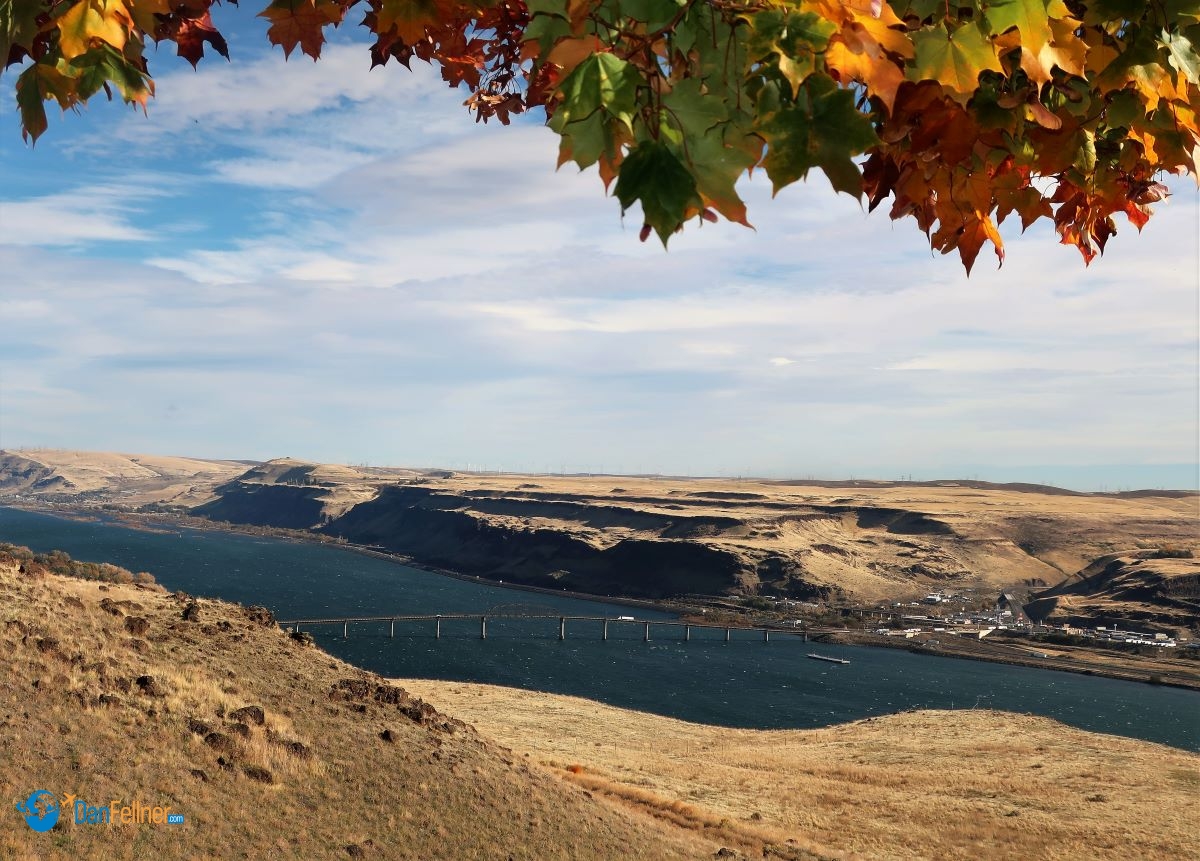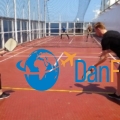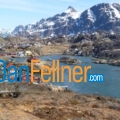Scenery and history highlights of trip to Pacific Northwest
The Arizona Republic/USA Today.com — November 10, 2019
STEVENSON, Washington – Meriwether Lewis and William Clark weren’t exactly sure where they were going on their historic, uncharted expedition in the Pacific Northwest more than 200 years ago.
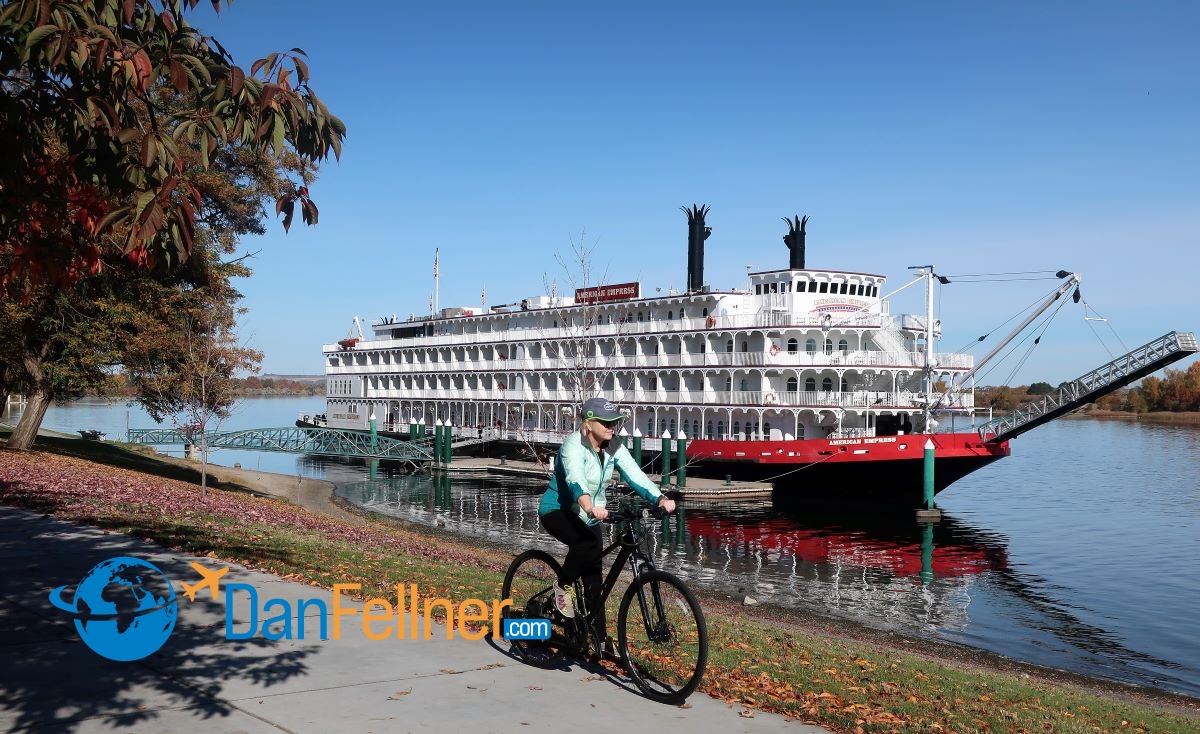
The 220-passenger American Empress docked on the Columbia River in Richland, Washington.
But what they found proved to be some of the most ruggedly beautiful, tranquil and alluring scenery in the country, stretches of which remain as pristine as when the trailblazing explorers first set eyes on this land in the early 19th century.
Perhaps the most spectacular portion of the journey taken by Lewis and Clark in 1804-06 to find a practical route from the Midwest to the Pacific Ocean is the Columbia River Gorge. It’s an 80-mile stretch of the river that – over millions of years – has created a canyon that slices through the Cascade mountain range and forms the border between the states of Washington and Oregon.

Cruising through the Columbia River Gorge at dusk on the American Empress.
I recently cruised through the gorge as part of a week-long trip on the Snake and Columbia rivers on the American Queen Steamboat Company’s American Empress, a 220-passenger vessel that is the largest overnight riverboat west of the Mississippi River.
The trip started with a flight to Spokane, Washington, in the far eastern part of the state not far from the Idaho border. After overnighting in Spokane, we were taken by coach about 100 miles to Clarkston, Washington. There, the Empress – which is partially propelled with a large red paddlewheel on the rear of the boat — was waiting for us while docked on the Snake River across from Lewiston, Idaho.
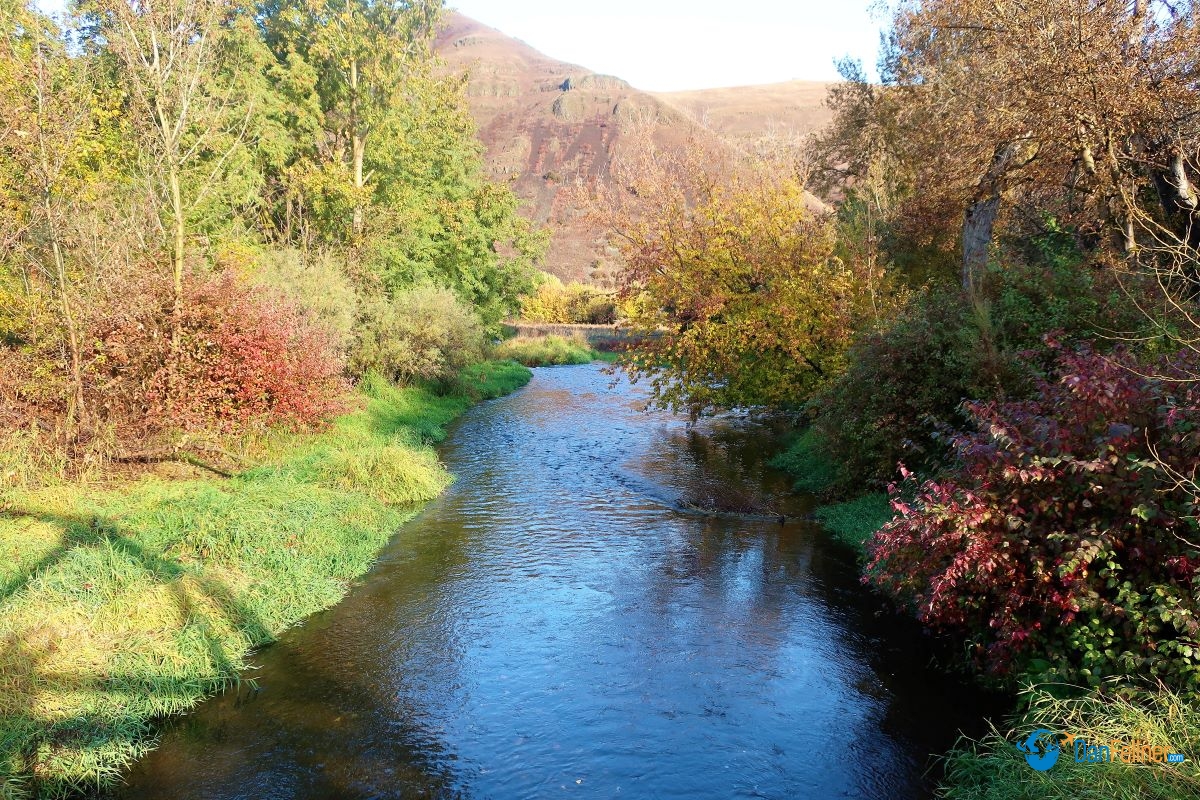
The fall colors at the Nez Perce National Historical Park in Washington.
Both Clarkston and Lewiston were named after the famous explorers who followed a similar path to the Pacific than we did, although Lewis and Clark’s journey was far more treacherous than we enjoyed on the American Empress.
Lewis and Clark had to survive brutal winters, scarce food supplies and skirmishes with Native Americans before they reached their destination – the Pacific Ocean at the mouth of the Columbia River – on Nov. 15, 1805. The journey from St. Louis to the Pacific took them 18 months; they returned safely to St. Louis in September 1806.
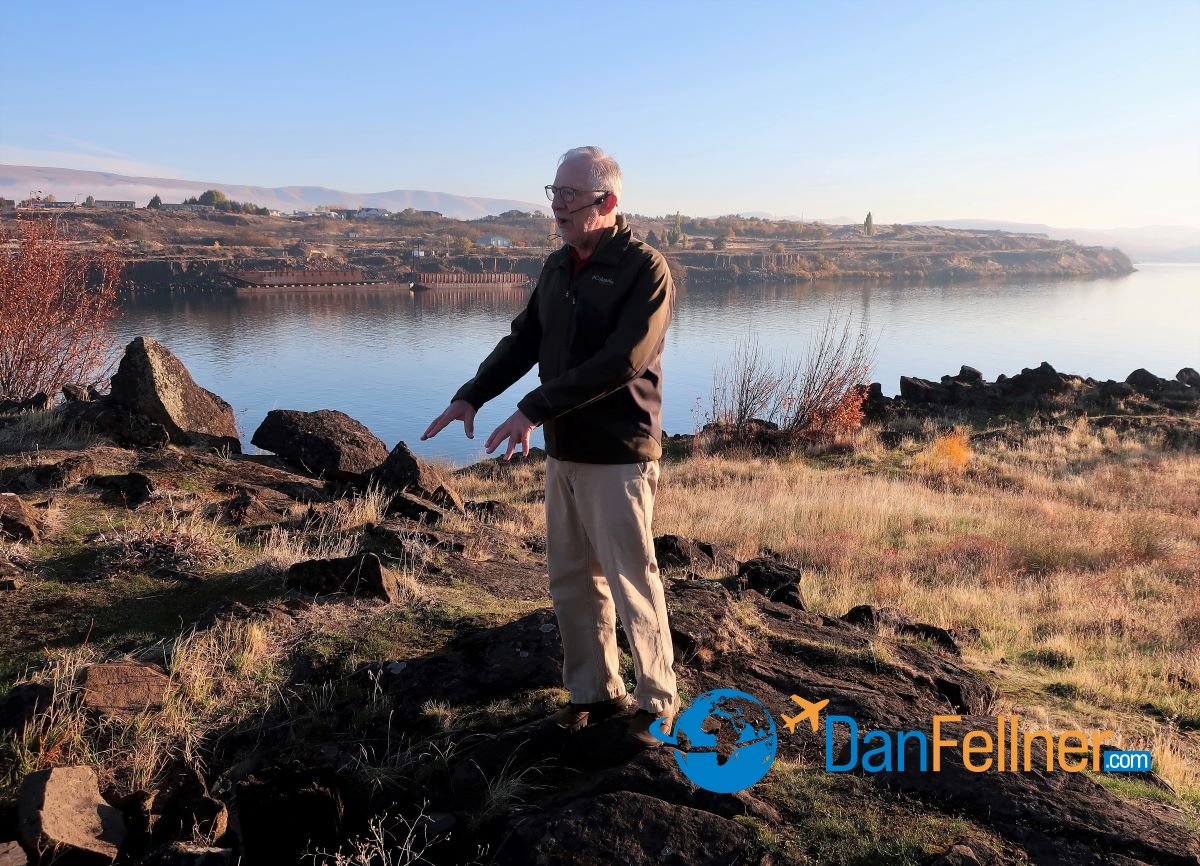
Laurence Cotton, the “riverlorian” of the American Empress, leads a hike to a campsite used by Lewis and Clark on the banks of the Columbia River.
We learned in-depth about the Lewis and Clark’s expedition through a series of lectures, films and hikes organized by Laurence Cotton, the boat’s “riverlorian,” a historian, writer and documentary producer who has been cruising the Snake and Columbia rivers since 2007.
Cotton says the Snake/Columbia itinerary is ideals for travelers who want to escape the crowds and busy ports found on other river cruises. We docked in lightly populated towns such as The Dalles, Oregon, Richland, Washington and Astoria, Oregon, the oldest American settlement west of the Rockies.
“We’re never in a big city,” Cotton says. “It’s mostly rural areas we go through in teeny-tiny ports of call. We don’t have castles. But we do have mountains. We do have beautiful scenery and lots of local culture and color. It’s real Americana.”
A day after leaving Clarkston, we arrived in Richland, Wash., near the confluence of the Snake and Columbia rivers. We visited the Sacajawea State Park, named for the young Shoshone woman who accompanied Lewis and Clark and was instrumental in the expedition’s success.
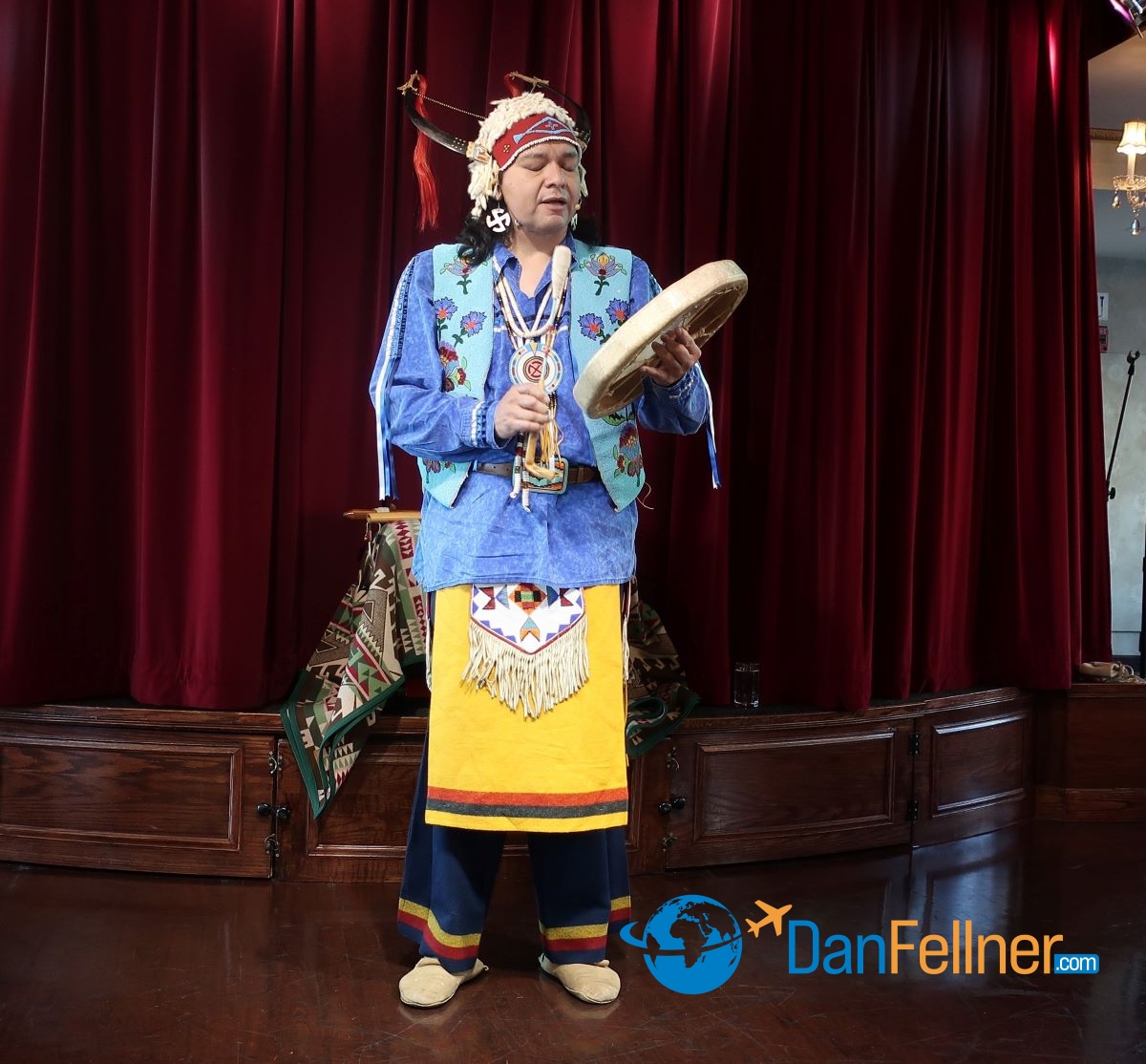
J.R. Spencer of the Nez Perce Indian Reservation performs on the American Empress.
We also learned about the traditions of the Nez Perce Native Americans, who have lived in this part of the country for centuries and welcomed Lewis and Clark on their trip to the Pacific. The American Empress invited onboard a member of the Nez Perce Indian Reservation in Idaho, J.R. Spencer, who taught us about the tribe’s history and beliefs, played the flute and drums while keeping us smiling with his witty and poignant storytelling (see video shot by the author: J.R. Spencer performs on the American Empress).
Once on the Columbia, we headed downriver toward the Pacific, passing apple orchards and vineyards. In recent years, Washington and Oregon have become increasingly recognized for their high-quality and moderately priced wines, which we were served each night for dinner.
As we sailed west through the Columbia River Gorge, the terrain changed dramatically from golden, dry grasslands to lush rainforests.
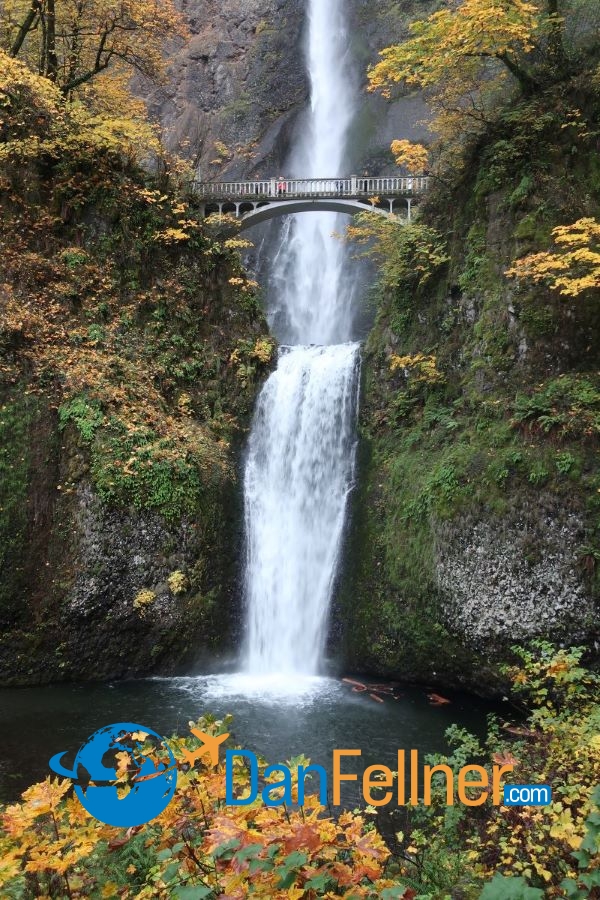
The two-tiered 620-foot-high Multnomah Falls in the Columbia River Gorge in Oregon.
With the Empress docked in Stevenson, Washington, we visited the two-tiered, 620-foot high Multnomah Falls on the Oregon side of the river, which attracts more than 2 million visitors a year (see video shot by the author: The spectacular Multnomah Falls in Oregon).
From the falls, we drove on the famed “Fruit Loop,” a scenic 35-mile route in the Hood River Valley known for its many orchards and fruit stands. On the loop, we enjoyed dramatic views of the volcanic, snow-capped Mount Hood. Reaching a height of 11,249 feet, it is Oregon’s tallest mountain.
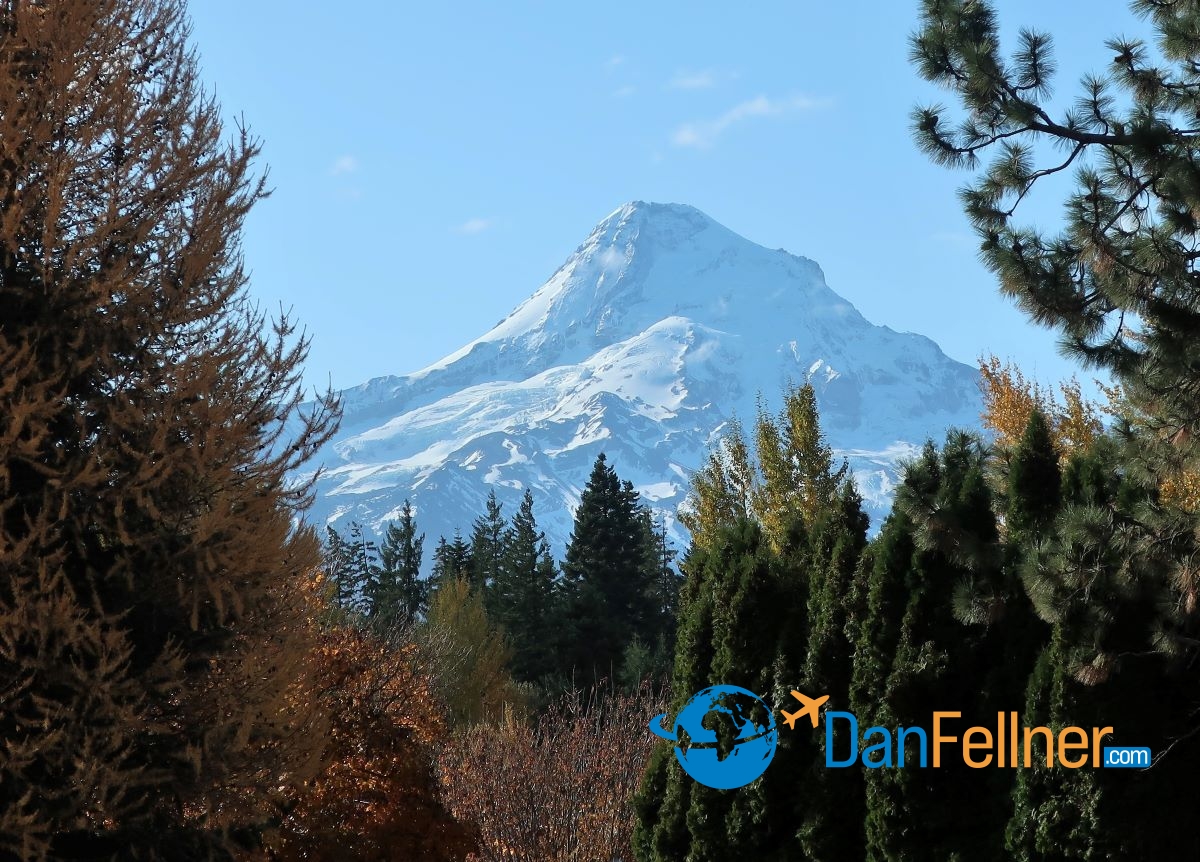
A view of Mount Hood from the Hood River Valley in Oregon. At 11,249 feet high, it’s the state’s tallest mountain.
Our final stop was in Astoria, Oregon, where the river meets the Pacific Ocean. In Astoria, we took a bike ride along the south shore of the Columbia and saw the sites in a town named after American business tycoon John Jacob Astor.
That evening, we sailed to Vancouver, Washington, directly across the river from Portland, Oregon, from where we flew home the following day.

Astoria, Oregon, located on the Columbia River near the mouth of the Pacific Ocean.
The cruising season on the Snake and Columbia rivers runs from March through December. Our trip in late October featured cool but mostly sunny days, with highs in the 50s and 60s. In some spots along the rivers, the falls colors were at their glorious peak.
There are only nine overnight riverboats – from four different companies — cruising the Snake and Columbia rivers. Indeed, we saw very little boat traffic during our voyage and the only attractions where we encountered large numbers of tourists were Mount Hood and Multnomah Falls. Most of the Empress’ sailings this year were at full capacity.
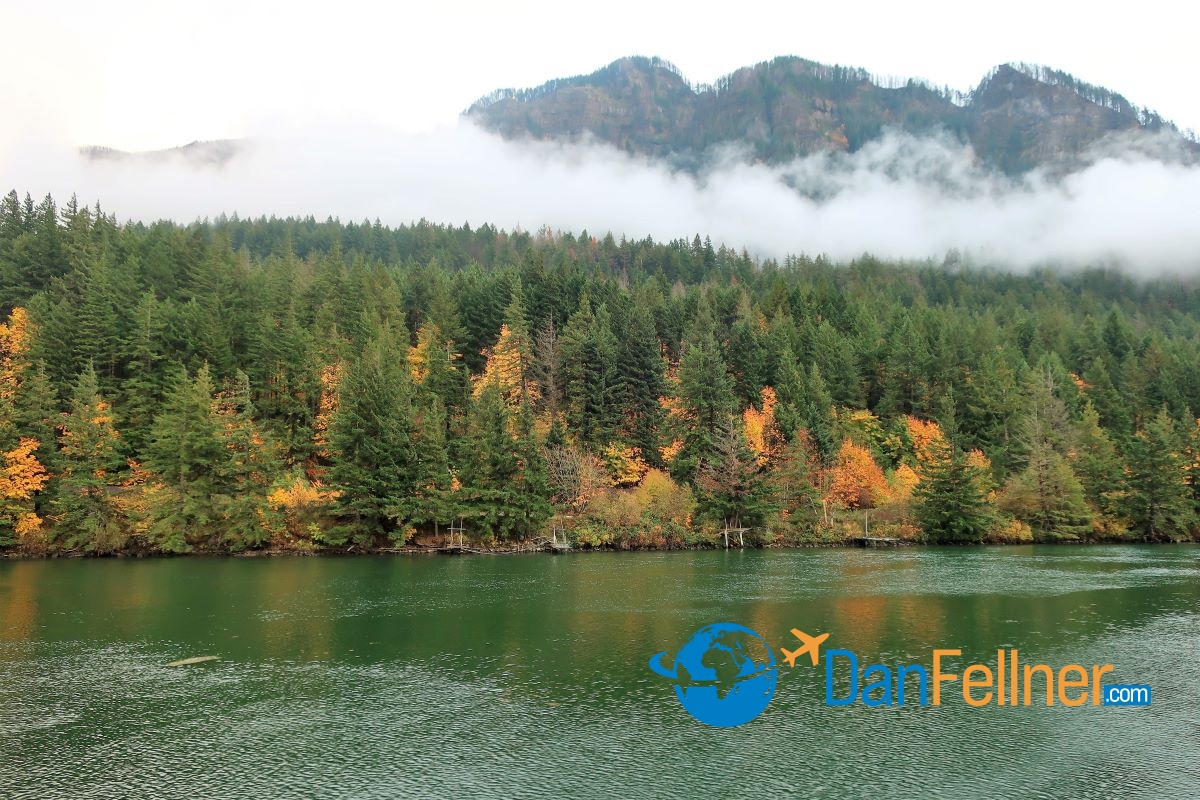
The Columbia River Gorge near Stevenson, Washington.
All told, we sailed more than 600 miles, passed through eight locks, under 30 bridges, and retraced the path of one of the most important expeditions in American history while enjoying magnificent scenery in the process.
“Everyone knows about the Mississippi,” says Cotton. “But not everyone knows how important the Columbia was, not to just this corner of the country, but to the American West.”
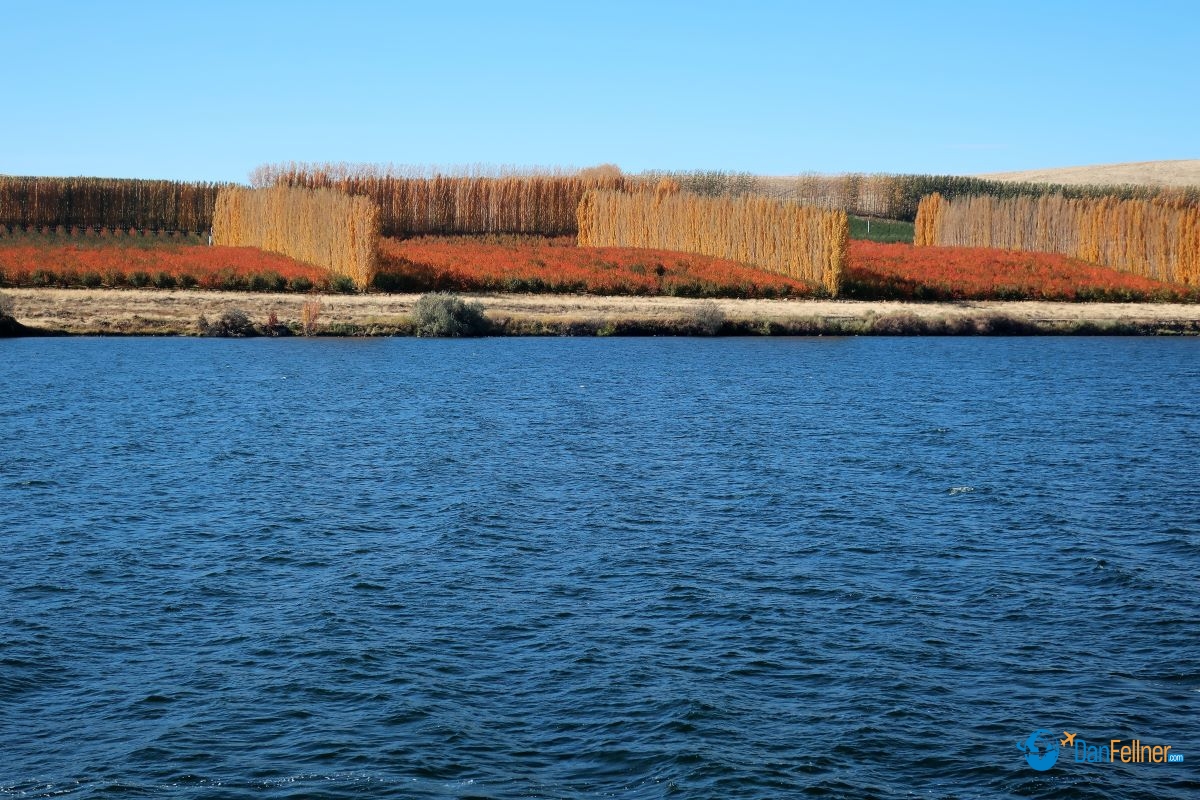
Apple orchards on the banks of the Columbia River in Washington, which produces more apples than any other state.
© 2019 Dan Fellner
Important links:
American Queen Steamboat Company
Columbia River Gorge Visitors Association

